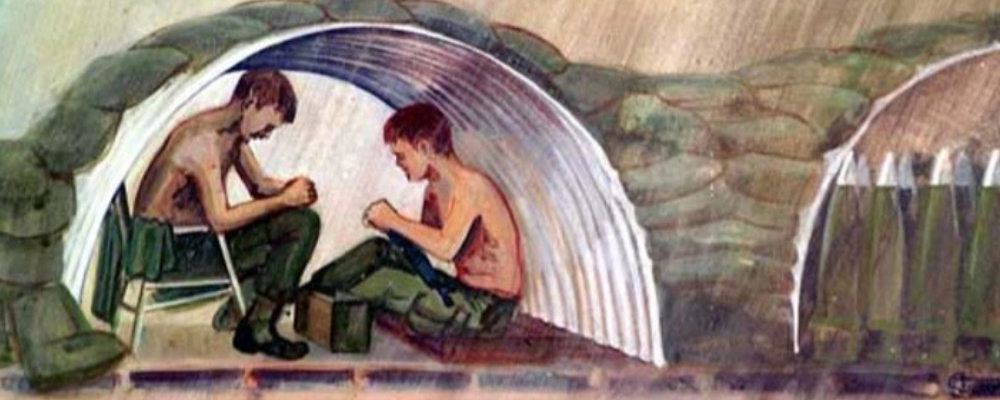
Some of the best Books@Work books spur conversations about what it means to be human. These books shed light on universal issues: family, work, identity, relationships and more. But sometimes, a good Books@Work book resonates with a group because it seems to exist specifically and solely for them. One such book is Margot Lee Shetterly’s Hidden Figures.
Hidden Figures tells the nonfiction story of three African-American female mathematicians who operates as “human computers” at NASA during the Space Race. The women endured racial discrimination and gender barriers, often receiving little or no credit for their extraordinary contributions. These themes prompt discussions about a variety of unique issues facing Books@Work participants in the workplace.
Read More

At Books@Work, we find books and short stories that generate meaningful discussion and encourage colleagues to share more of themselves. As one participant shared, a good book “makes it easier to break down people’s issues and have difficult conversations, because it’s hidden behind the cloak of the material.”
For many groups, a “good book” is a novel with dynamic characters and ethical dilemmas. For others, it might be a nonfiction narrative like Margot Lee Shetterly’s Hidden Figures, which often resonates with engineers and manufacturing employees. But some books, like James McBride’s memoir The Color of Water, find success and provoke powerful discussions with groups across the board.
What is the book about?
Read More

What do Books@Work participants read? The short answer: books, short stories, plays and more. Rich narratives – from literary fiction to memoirs – introduce us to new ideas, build genuine connections and foster more inclusive workplaces and communities. Before each program begins, we survey participants for their preferences, consult with professors and draw upon the knowledge and experience of Books@Work staff to choose the readings.
While some groups prefer books, others stick to one short story per session. Over time, we’ve found that certain short stories succeed with a wide variety of groups – executive leadership teams, police officers, healthcare workers and veterans alike.
One particularly successful Books@Work story is Chinua Achebe’s “Dead Men’s Path,” the tale of young, energetic Michael Obi, who takes a new role as headmaster of a Nigerian school in 1949.
Read More

At Books@Work, we use literature to generate meaningful conversation, bridge divides and encourage human connection. This Thanksgiving week, we invite you to grab a friend or family member to read and discuss O. Henry’s classic story “Two Thanksgiving Day Gentlemen” together.
Read More

For most of my life I have believed in the power of literature to affect the human heart. But sometimes, a discussion of good literature provides an unexpected insight into the profound impact of stories. This week I had such an experience as each person in a room became a teacher and each person became a learner.
This flash occurred at the Veterans Domiciliary, a residential program that is jointly run by the Veterans Administration and the Volunteers of America, and that serves veterans facing a variety of serious issues, including homelessness, trauma, addiction and other life-challenging hurdles. Books@Work brought a mini-version of the program to the entire cohort of veterans currently at the Domiciliary during their weekly group meeting.
Read More

On November 1, 2017, we gathered with veterans at the VA Domiciliary in Cleveland, Ohio to discuss Chinua Achebe’s short story, “Dead Men’s Path.” The VA Domiciliary – called the “Dom” – is a residential treatment facility for veterans. We were thrilled to facilitate a Big Read as the kickoff to our second Books@Work program with this group.
Our executive director began to read aloud, and the room fell silent after a few last murmurs. The rustling of paper, creaking of chairs, the scratch of Styrofoam coffee cups and Ann’s clear voice filled the room of over 60 veterans – of all ages – listening intently. As she arrived at the end of the first page, I heard the sweet swoosh of pages turning in unison and knew this session would be special.
Read More

He died almost 100 years ago, but Franz Kafka’s voice remains oddly relevant today. He wrote such bizarre and affecting stories that he left behind his own adjective, “kafkaesque”, to describe strange and nightmarish situations embedded in everyday life. With no shortage of the strange these days, we were particularly excited to have Books@Work featured in The New York Times – comparing Kafka’s iconic book, The Metamorphosis, with an powerful article on social isolation and loneliness, written by Dhruv Khullar, a physician and professor of healthcare policy at Columbia University.
Kafka’s stories feature disaffected characters who push the edges of the human condition – and often fail. The Metamorphosis is no exception. Traveling salesman Gregor Samsa wakes one morning to find that he has been transformed into a hideous bug. Unable to communicate, Gregor finds his sense of self and his relationship to his family and his work irreparably destroyed, with dire consequences.
Read More

After residents at a treatment facility for homeless veterans recently participated in the discussion of a short story, one social worker expressed surprise at the group’s ease and openness with each other. “I’m amazed at some of the insights they share [with each other] as they’re reading,” he said. “They say, ‘Well, I’ve known you for six weeks and been in group therapy with you – and this is the most I’ve ever heard you talk.”
The Veterans’ Domiciliary at the Louis Stokes VA Medical Center in Cleveland, Ohio serves veterans facing challenges including homelessness, mental illness, trauma and addiction. Male and female residents can often stay for months at a time as they work to improve their mental health, seek employment and get back on their feet.
Read More

In early 2015, Books@Work launched two prolific and ongoing community programs in collaboration with the Louis Stokes VA Medical Center in Cleveland, Ohio. The first program gathers medical center staff members to encourage wellness and stronger workplace relationships. The second program focuses on residents in the VA’s Veterans’ Domiciliary, a residential rehabilitation and treatment center for veterans.
In both programs, participants meet for weekly one-hour sessions, facilitated by professors from local colleges including Case Western Reserve University, the University of Akron and Oberlin College. Professors facilitate in four-week periods, representing a wide range of backgrounds including literature, religious studies, history and sociology – thus, participants are exposed to various disciplines and facilitation styles.
Read More









